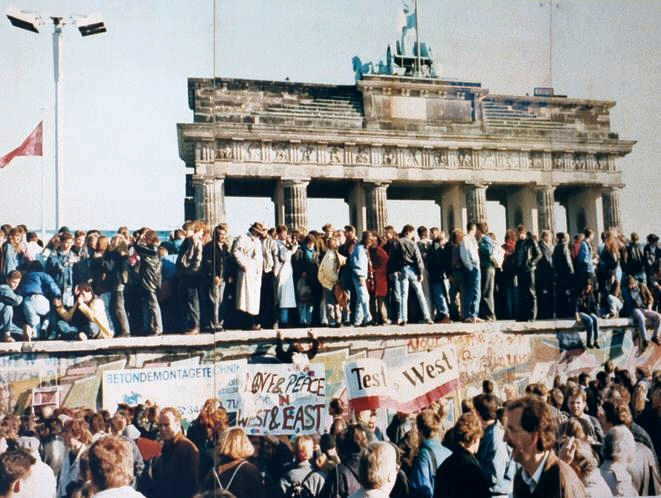21.1: End of the Cold War
- Page ID
- 138482
The Cold War ended in the 80s. Between 1989 and 1991, the Soviet system collapsed and Russia lost control of its Eastern European satellites. Soviet leaders Yuri Andropov and Mikhail Gorbachev began relaxing the strict controls the state had been exercising on satellite states. For example, Andropov prevented the U.S.S.R. from invading Poland in 1981 to crush the Solidarity movement. By 1989, Solidarity was included in multiparty elections in Poland and the movement’s leader, Lech Walesa, was elected President (1990-95).
Andropov’s successor, Gorbachev began a process of
- perestroika, restructuring the economy
- glasnost, a policy of increased openness in politics and support for individual rights including freedom of speech.
The freedom of speech Gorbachev granted included the freedom to criticize the government, which he would be unable to control.
Meanwhile, the Soviet economy continued to spiral downwards. By the second half of the 1980s, Gorbachev simply ended the arms race with the United States, conceding the USSR could not match the US's gigantic arsenal. Starting cautiously in 1988, he also announced to the governments of Eastern Europe that they would be "allowed to go their own way" without Soviet interference. Never again would columns of tanks respond to protests against communism. When Gorbachev made good on his promises and protest movements against the communist states started to grow, it was the beginning of the end for the entire Soviet Bloc. Over the course of 1989, one country after another held free elections, and communists were expelled from governments.
The Berlin Wall
In October 1989, East Germany’s longtime leader resigned. Erich Honecker had been instrumental in building the Berlin Wall. During his time as the ruler of the communist nation, Honecker had ordered East German troops to fire on people trying to escape to West Berlin. Over a thousand people were killed over the years. After Honecker's resignation, the wall that physically symbolized the Cold War between the West (democratic-U.S.) and East (communist-U.S.S.R.) came down. As for Honecker, he first fled to Russia and then Chile to evade legal prosecution, where he died in 1994.

Tearing down the wall and reunifying Germany in 1990 were milestones at the end of the Cold War. In 1991, Gorbachev agreed to allow the Baltic Republics (Latvia, Lithuania, and Estonia) to secede from the U.S.S.R., and hard-liners in the Kremlin tried to overthrow him in a coup. The president of the Russian Federation, Boris Yeltsin, supported Gorbachev and thwarted the coup. Although Gorbachev had been returned to the Kremlin, Yeltsin began gaining power for himself. In late 1991, Yeltsin flew the Russian flag over the Kremlin alongside the Soviet flag. On December 25, 1991, Gorbachev resigned as President of the USSR in a televised speech, and handed over the Soviet nuclear codes to Yeltsin. The following day, the U.S.S.R. was dissolved and Yeltsin moved into Gorbachev’s office at the Kremlin. The collapse of the Soviet Union left the US as the world’s only superpower.
After the collapse of the USSR, some Eastern European countries (e.g. the Czech Republic, Poland) enjoyed at least some success in modernizing their economies and keeping political corruption at bay. In Russia itself, the 1990s were an unmitigated economic and social disaster. The entire country jumped into a market economy without any planning or oversight, while dismantling social programs and government services. New industries did not suddenly materialize to fill the enormous gaps in the Russian economy that had been played by state agencies. Unemployment skyrocketed and the distinctions between legitimate business and illegal or extra-legal trade all but vanished.

